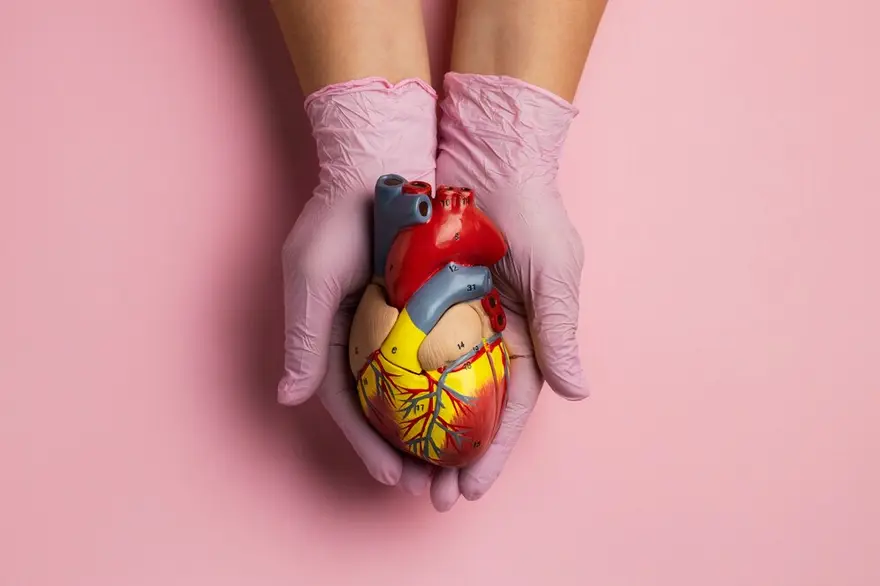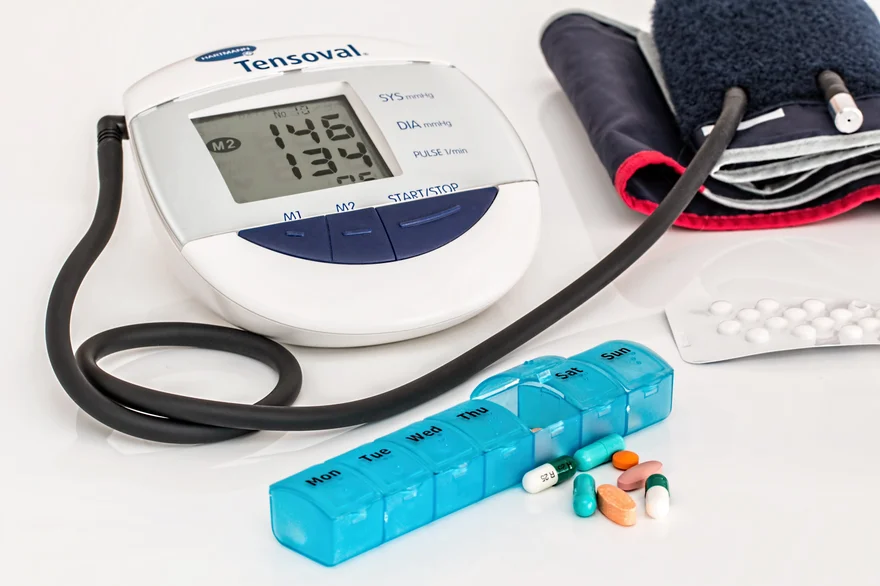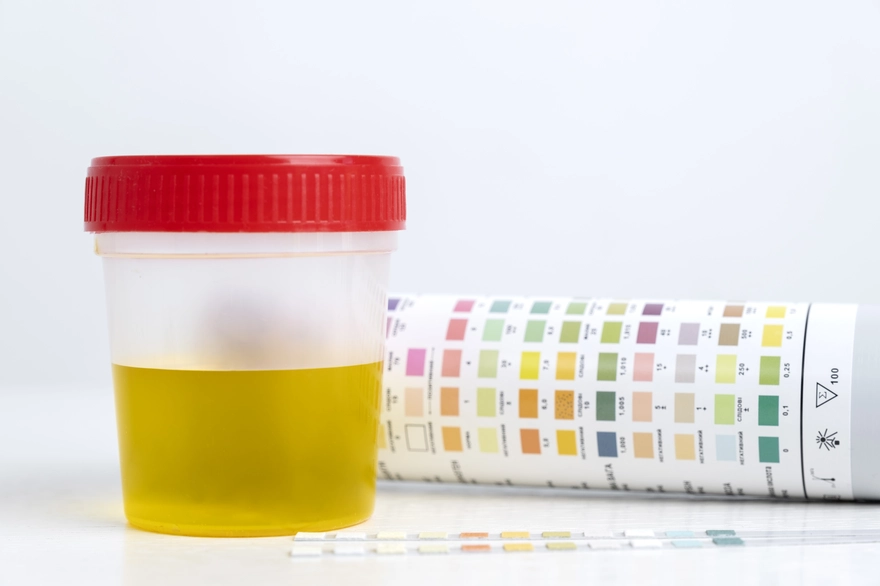Preventive Healthcare
Pericardial Effusion: Symptoms, Causes, and Treatments
692 Views
0

Introduction
Heart health is a crucial aspect of overall wellness. However, certain conditions, such as pericardial effusion, can impact how the heart's functionality. The heart is encased in a protective layer called the pericardium. When fluid accumulates in this layer, it causes a pericardial effusion. Think of the heart as your body's vital pumping engine, shielded by this protective sac that defends against shocks and infections. But what occurs when this protective layer becomes a potential hazard?
This introduction to pericardial effusion highlights a condition characterised by excess fluid accumulation in the pericardium. Understanding pericardial effusion, including its causes, symptoms, treatment options, and potential complications essential for effective heart health management. This article serves as a comprehensive guide to this condition.
What is Pericardial Effusion?
Pericardial effusion is a medical condition involving excess fluid accumulation in the pericardium. The pericardium is a double-layered sac that envelops our hearts. This structure usually has a thin layer of fluid acting as a cushion for the heart during its rhythmic contractions and relaxations.
Unfortunately, when this saclike structure becomes diseased or injured, it can lead to inflammation and excess fluid buildup. Additionally, a fluid may accumulate without inflammation due to bleeding related to cancer or after chest trauma.
Imagine having a water balloon inside a small box. The water balloon represents your heart, and the box represents the pericardium. If the balloon becomes full (pericardial effusion), it will press against the walls of the box (pericardium). This pressure can strain your heart, impacting its normal function. In severe cases where prompt treatment is not given, pericardial effusion can lead to heart failure or even be fatal.
How common is Pericardial Effusion?
Pericardial effusion is a relatively common condition that can affect people of any age or background. The prevalence can vary widely depending on individual health conditions, lifestyle factors, and genetic predispositions. Pericardial effusion is quite common; it can happen to individuals across all age groups due to various reasons such as infections or injuries. With a myriad of potential causes ranging from infections and injuries to other medical conditions, it can affect people of diverse ages and backgrounds.
What are the complications of Pericardial Effusion?
One possible complication of pericardial effusion is cardiac tamponade, which can be life-threatening. This happens when excessive fluid in the pericardium applies pressure on the heart, preventing the chambers from filling with blood. If not treated, it can lead to shock and cause severe issues like multiple organ failure and even death. Furthermore, if the pericardium can develop scars, affecting the heart's ability to fill correctly.
Additional complications include venous congestion and reduced stroke volume. While a small amount of fluid is normal, too much can severely disrupt heart function, making a prompt treatment crucial to mitigate these risks.
What are the Pericardial Effusion symptoms?
It's noteworthy to understand that pericardial effusion may not always display obvious signs or symptoms, particularly if the fluid builds up slowly.
However, when symptoms do occur, they might include:
- Shortness of breath or difficulty in breathing
- Discomfort when breathing while lying down
- Chest pain or discomfort, typically behind the breastbone or on the left side
- Feeling of chest fullness
- Lightheadedness or fainting episodes
- Swelling in the abdomen or legs
If you suddenly experience severe symptoms of pericardial effusion, you need to get a prompt medical assessment. This includes chest pain that lasts more than a few minutes, difficulty or pain while breathing, or unexplained fainting. It's important to seek medical attention immediately.
What are Pericardial Effusion causes?
Pericardial effusion can be caused by several factors. It often results from inflammation of the pericardium (pericarditis) after an illness or injury. In some cases, large effusions may be caused by certain cancers. So, pericardial effusion can be caused due to inflammation of the pericardium (pericarditis), due to illness or injury, as well as from certain types of cancers causing large effusions.
Other causes include:
- Autoimmune disorders like rheumatoid arthritis or lupus
- Heart or pericardium cancer
- Spread of cancer (metastasis) particularly lung cancer, breast cancer and Hodgkin's lymphoma
- Radiation therapy for cancer targeting the heart area
- Chest trauma, such as a car accident or stabbing injury
- Post-heart attack or post-heart surgery inflammation of the pericardium
- Underactive thyroid (hypothyroidism)
- Certain drug use or exposure to toxins
- Viral, bacterial, fungal or parasitic infections
- Kidney failure which leads to waste products in the blood (uremia)
In some cases, the specific cause cannot be determined, leading to a diagnosis of idiopathic pericarditis.
How is Pericardial Effusion diagnosed?
If you present symptoms of pericardial effusion, a healthcare provider would diagnose the condition by reviewing your medical history, conducting a physical examination, assessing your symptoms, and performing medical tests.
Diagnostic tests may include:
- Electrocardiogram (ECG) to monitor heart's electrical activity
- Echocardiogram
- Chest X-Ray
- CT scan of the chest
- MRI of the heart
Post-diagnosis, lab tests can be conducted to identify the cause of pericardial effusion. These tests may include a complete blood count (CBC), troponin levels, B-type natriuretic peptide, thyroid-stimulating hormone, and immune system assessments.
What are the Pericardial Effusion treatment options?
Treatment for pericardial effusion varies based on the amount of fluid and its underlying causes:
- Common options include medications like aspirin, NSAIDs, steroids, and antibiotics to reduce inflammation.
- For fluid drainage, a minimally invasive procedure uses a needle and catheter, guided by imaging techniques such as echocardiography.
- In some cases, a percutaneous balloon pericardiotomy is performed, where a balloon creates a small hole in the pericardium to facilitate drainage.
- More invasive options include pericardiectomy, which involves removing part or all of the pericardium, and open heart surgery, which may be necessary for drainage or repair.
- Additionally, thoracoscopic pericardial window surgery creates an opening for internal fluid drainage.
Treatment outcomes depend on the cause, severity, promptness of care, and overall health.
What are the complications/side effects of Pericardial Effusion treatment?
Potential side effects with pericardial effusion treatment strongly depend on the specific treatment or medications you receive. For instance, a rare but severe complication could be pericardial decompression syndrome, which usually occurs when fluid removal from a large effusion happens too quickly. To avoid this, your healthcare provider may choose to drain the effusion more slowly. Even though treating pericardial effusion can be helpful, there are still some possible complications that may occur.
How soon after treatment will I feel better, and how long does it take to recover?
Treatment for pericardial effusion mainly depends on its cause and severity. For small, asymptomatic effusions, close monitoring may be sufficient. However, if the condition worsens or becomes life-threatening due to rapid fluid buildup or complications like cardiac tamponade, immediate medical intervention is necessary.
Treatment options may include medications to address the underlying cause, needle aspiration (pericardiocentesis) to remove excess fluid, or surgery to create a drainage window in the pericardium. It's important to discuss these options thoroughly with a healthcare provider about these options to understand the possible risks and benefits.
Can Pericardial Effusion be prevented?
You can't always prevent pericardial effusion, but you can reduce your risk by maintaining a healthy lifestyle, limiting alcohol, having regular check-ups, treating infections, avoiding injuries, and considering genetic counseling if it runs in your family. Treatment options include draining fluid or surgery.
What can I expect if I have Pericardial Effusion?
Pericardial effusion is usually a serious condition, but it isn't always a medical emergency. Whether it poses a life-threatening risk depends on the underlying cause, the volume of fluid present, and how quickly that fluid accumulates in the pericardium.
When an effusion occurs rapidly, even a small amount of fluid can become dangerous and cause cardiac tamponade. That’s because the pericardium doesn’t have enough time to stretch and accommodate the extra fluid. In contrast, a slow buildup of fluid can take weeks or even months before it causes issues.
One key factor in determining the seriousness of a pericardial effusion is its underlying cause. If it results from injuries or heart and circulatory issues, especially those that lead to rapid fluid buildup, it requires prompt treatment to prevent serious complications like cardiac tamponade.
How long Pericardial Effusion lasts?
Large effusions and those that develop rapidly are serious and require prompt medical attention. They should not persist any longer than it takes to diagnose and treat them, especially in emergency cases.
Chronic effusions, especially smaller ones that are asymptomatic, can last for weeks, months, or even years. Your healthcare provider may recommend a regular follow-up appointments to monitor the size of the effusion and assess any potential health risks.
What is the outlook for Pericardial Effusion?
Doctors can often treat pericardial effusions, and sometimes they can cure them based upon its severity they are and what causes. Generally, effusions with unknown causes have a good outlook.
However, those caused by trauma or cancer often have more complications and are more difficult to treat. Survival rates are lower for people with pericardial effusions related to cancer or HIV/AIDS.
How do I take care of myself?
If you have a pericardial effusion, it’s important to watch for any symptoms or changes in your overall health. You should also follow your healthcare provider’s guidance, especially when it comes to taking medication and managing your recovery.
When to see a doctor?
Your doctor can arrange follow-up appointments to monitor your condition if needed. They will also offer advice on how to manage your symptoms. Additionally, they can answer any questions you may have and help you understand your treatment options, ensuring you feel supported throughout your care.
Conclusion
Pericardial effusion adds another layer to the complexities of heart health. Knowing the symptoms, causes, and treatments empowers you to respond appropriately, and regular check-ups with your healthcare provider are important. For convenient at-home check-ups, consider Metropolis Healthcare's diagnostic services, which offer accurate sample collection and personalized care, making it easier to prioritize your heart health. Trained technicians conduct blood collections, with results shared via email and the TruHealth app. For more information about their services and support on your health journey, visit the Metropolis Healthcare website.
For more information about our offerings and how they can support your health journey, please explore the Metropolis Healthcare website.























 WhatsApp
WhatsApp